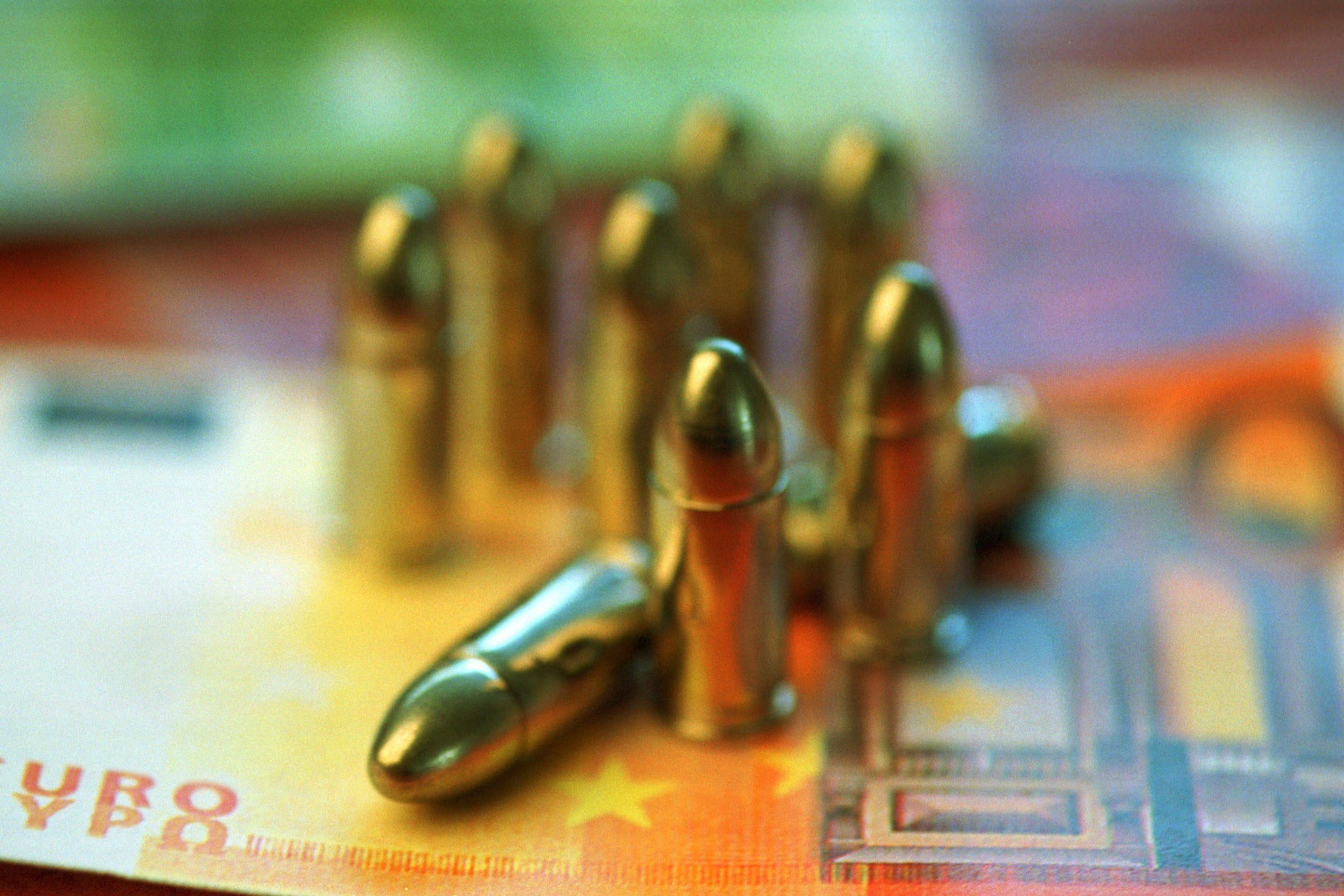European Defence Fund: Between Economy and Politics

Pilot EDF
The European Commission (EC) launched the EDF on 7 June 2017 in pilot form—a limited budget and only for the years 2017–2020. Collaborative research on innovative defence technologies is covered through grants awarded within the framework of the Preparatory Action on Defence Research (PADR) with a total budget of €90 million. Joint programmes involving the development of new armaments and other defence equipment will be co-financed from the European Defence Industrial Development Programme (EDIDP), a €500 million fund.
To date, there have been seven grants worth €50 million in total awarded within PADR. They involve the integration of unmanned vehicles into a single system for enhanced maritime situational awareness (the biggest grant, €35 million); technologies for directed energy weapons; technical standards for individual combat systems for troops; next-generation bulletproof garments; textile-based adaptive camouflage; and, strategic technology and defence industrial foresight. Within successful consortia, there are also Polish partners, including the Military Technology University in Warsaw and the Maritime Technology Centre (OBR CTM) in Gdynia. In 2020, further grants will be awarded involving the application of artificial intelligence and quantum computing in weapon systems and the development of next-generation long-range precision strike armaments.
By the end of 2020, some first-capability development programmes will also receive financial contributions from the EDIDP. The EC earmarked €192 million for joint undertakings in the areas of satellite positioning, communication, and timing (which is expected to receive the most funding, up to €44.1 million); space- and air-based intelligence, reconnaissance and surveillance capabilities; multi-purpose unmanned ground vehicles; software and hardware for detection and defence against threats in cyberspace to military networks; electronic systems to enhance EU command and control capabilities with regards to military operations; advanced ground-based precision strike capabilities; aircraft-integrated electronic warfare systems; and, advanced jetfighter simulators. A special pool of money (€7.5 million) will support programmes developed by small and medium-sized enterprises (SMEs).
In March 2019, the EC proposed direct awards from the EDIDP for two programmes: €100 million for EURODRONE (a next-generation armed reconnaissance drone) and €37 million for ESSOR (future digital radio communication, a project in which Poland participates). The EC justified its proposal by indicating the importance of these two initiatives to overall European military capacity and that both are already implemented as PESCO projects.
The EDF in 2021–2027
The proposal for the regulation establishing the fully-fledged EDF for the years 2021–2027 was adopted by the European Parliament on 18 April 2019. It should be finalised by the EU Council before the end of 2020, but two controversial issues need to be resolved first. The first is the EDF budget.
The EP upheld the original proposal of the EC from 2018 that assumed €13 billion for the entire seven years. This included €4.1 billion for collaborative research on innovative defence technologies and €8.9 billion for joint-capability development programmes. Yet, the Finnish presidency proposed in December 2019 to cut the future EU budget and, consequently, also to limit the allocation for the EDF to €6 billion. In February 2020, Charles Michel, president of the European Council, proposed an EDF budget at €7 billion. The EP and some Member States are indicating that such a modest budget will seriously limit the significance of the EDF. By comparison, in 2018 the total spending of the EU27 (without Denmark) on research on new defence technologies and development of new armaments and defence systems stood at €8.7 billion.
The second unresolved issue comprises the conditions of access of non-EU entities to the EDF. In line with the proposal of the regulation, consortia that include such companies as members will be eligible to apply for contributions from the fund. Yet, non-EU firms will not be allowed to receive funds, freely use the intellectual property developed in the supported programmes, or gain access to classified information regarding the implemented undertakings. Entities based in the EU but which are subsidiaries of non-EU firms will have to present special guarantees regarding blocking access to their parent companies to the implemented programme and its products. In practice, these regulations will make it extremely difficult to access EDF for British and U.S. companies or their EU subsidiaries or European partners linked with them through their shareholding structure. This is why the proposal for the EDF regulation was strongly criticised in May 2019 by the U.S., which made the argument that a special, additional status should be given to non-EU members of NATO to grant them more equal access to the fund. Some EU members (like Poland or Sweden) are calling for compromise with the U.S., but a group of states (including France) and the EP are strongly against it.
The EDF’s Prospects
The smaller the EDF budget, the less its influence on the EU defence industry. The logic behind the fund assumes that the financial contributions from the EU budget will support innovative undertakings in their crucial, opening phases, which are very costly and their results unsure. The EDF will then be a risk-mitigation tool, encouraging the Member States to invest in new programmes, and increasing their chances of success. At the same time, the contributions from the EDF are seen as leverage to generate extra spending to finish collaborative programmes (the EU will cover only up to 55% of the most expensive phase of the programmes, i.e., prototype construction, with the rest to be covered by the co-operating states) and to acquire the developed armaments and defence systems (the EU will not co-finance acquisitions). Poland may stress that a small EDF budget will result in fewer supported initiatives and, consequently, less investment in new capabilities.
The fund may at the same become a contentious issue both in transatlantic and EU-UK relations. If no consensus is reached on the issue of access of non-EU NATO entities to projects supported by the EDF, tensions may escalate and further undermine political cohesion in NATO. The essence of the conflict is not the intention of American and British companies to gain access to funds available through the EDF (as they are relatively small), but their desire to keep a firm foothold in the EU defence equipment market. But keeping the EU dependent on defence technologies provided by external players (mainly the U.S.) is contrary to the concept of building EU strategic autonomy. This, however, should not be seen in absolute terms. The EU could establish a consultative process with the U.S. and UK to determine technology areas in which it would be possible to launch several joint programmes under the EDF. To make this possible, the final regulation on the EDF should, however, include a derogation clause, applied on a case-by-case basis and under precisely defined conditions, in order to lift the limitations for non-EU entities as regards their rights to participate in EDF-funded programmes.
For Poland, the EDF is a chance to join European defence-industrial collaboration and acquire technology and know-how via a different mechanism than the offsets and licenses used to date. The fund promotes intra-EU cooperation by conditioning eligibility to apply for funds on the participation of at least three different entities from three Member States in a consortium. By seeking a role such consortia, even in relatively small undertakings, Poland may be able to prepare to participate in large, European armament programmes expected in the second half of the current decade and later. At the same time, it is a vested Polish interest to both increase the EDF budget as close to the original EC proposal as possible and to open it, at least partially, to non-EU NATO members so that the potential tensions in the Alliance are avoided. Poland may also express the view that the long-term competitiveness of EU defence companies and overall European military capacity requires multi-billion-euro investments into new capabilities, which will be possible only if European defence expenditures continue to rise.


